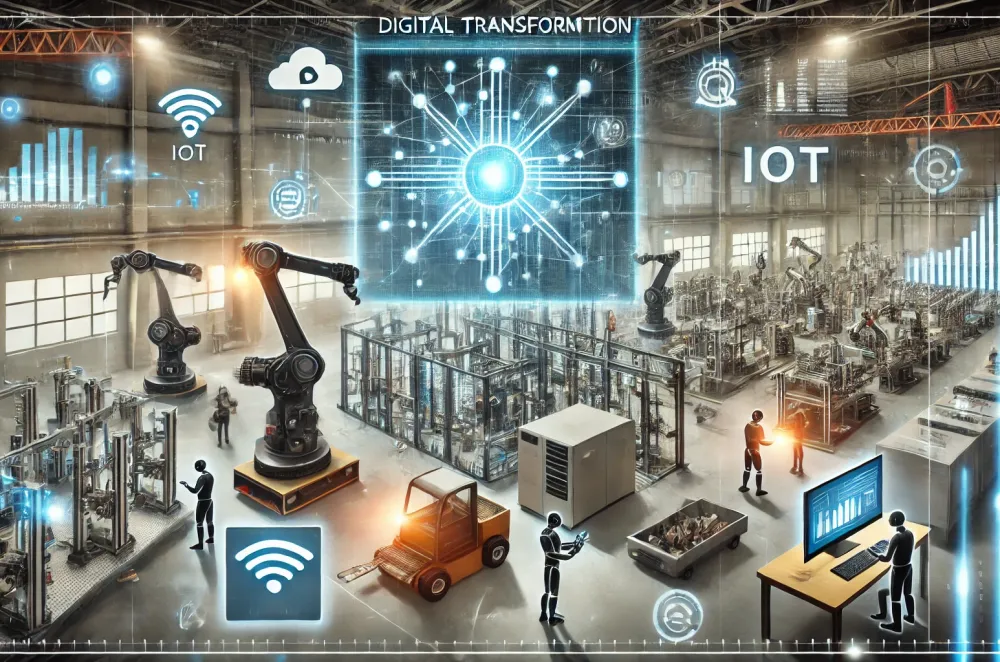Why Digital Transformation is Difficult for Manufacturers to Embrace
Digital transformation promises substantial benefits for manufacturing, including improved efficiency, cost reduction, and enhanced competitiveness. However, many manufacturers find the journey towards digitalization challenging. This post explores the reasons behind the difficulties in embracing digital transformation in the manufacturing sector.
Why Digital Transformation is Difficult for Manufacturers to Embrace
1. High Initial Investment
One of the primary barriers to digital transformation is the significant upfront investment required. Implementing advanced technologies such as IoT, AI, and cloud computing involves substantial costs related to hardware, software, and infrastructure upgrades.
- Capital Expenditure: The financial outlay for new technology, along with the integration of legacy systems, can be prohibitive for many manufacturers.
- Return on Investment (ROI) Concerns: Manufacturers often struggle to justify the ROI of digital transformation projects, particularly in the short term. The benefits, although substantial, may take years to fully materialize.
Example
A mid-sized manufacturer might hesitate to invest in IoT-enabled machinery due to the high costs and the uncertainty of how quickly the investment will pay off.
2. Cultural Resistance and Change Management
Digital transformation requires a fundamental shift in organizational culture and mindset, which can be difficult to achieve.
- Resistance to Change: Employees and management may resist new technologies and processes due to fear of the unknown or discomfort with changing established routines.
- Skill Gaps: The existing workforce may lack the necessary digital skills, requiring extensive training and development programs. This adds to the complexity and cost of transformation.
Example
A traditional manufacturing plant with long-serving employees might face significant pushback when introducing AI-driven automation, as workers fear job displacement and struggle with new technology.
3. Integration with Legacy Systems
Manufacturers often operate with legacy systems that are not easily compatible with new digital technologies.
- Complexity: Integrating modern digital solutions with outdated legacy systems can be technically challenging and costly.
- Data Silos: Legacy systems often create data silos, making it difficult to achieve a unified, real-time view of operations that digital transformation aims to provide.
Example
A manufacturer using decades-old ERP systems might find it difficult to integrate with modern cloud-based analytics platforms, resulting in fragmented data and inefficiencies.
4. Cybersecurity Concerns
As manufacturers adopt digital technologies, they become more vulnerable to cyber threats. Ensuring robust cybersecurity is a critical and challenging aspect of digital transformation.
- Increased Attack Surface: The integration of IoT devices, cloud services, and interconnected systems increases the number of potential entry points for cyberattacks.
- Security Infrastructure: Developing and maintaining a strong cybersecurity infrastructure requires continuous investment and expertise, which can be daunting for manufacturers.
Example
A manufacturer adopting IoT for predictive maintenance might be concerned about the security of data transmitted from sensors, fearing potential breaches that could disrupt operations.
5. Uncertain Outcomes and Market Dynamics
The rapidly evolving nature of digital technologies means that manufacturers face uncertainty regarding the long-term outcomes and market dynamics.
- Technology Obsolescence: Rapid advancements in technology can render recent investments obsolete, causing hesitation in adopting new systems.
- Market Volatility: Economic uncertainties and market volatility can make it difficult for manufacturers to commit to long-term digital transformation projects.
Example
A manufacturer might delay investing in new automation technology, concerned that newer, more advanced solutions will emerge shortly, rendering their investment less effective.
6. Regulatory and Compliance Issues
Manufacturers must navigate a complex landscape of regulations and compliance standards, which can complicate digital transformation efforts.
- Compliance Costs: Adhering to industry-specific regulations and standards adds an additional layer of complexity and cost to digital transformation projects.
- Data Privacy: Ensuring compliance with data privacy regulations such as GDPR can be challenging, particularly when implementing cloud-based solutions.
Example
A medical device manufacturer must ensure that their digital transformation initiatives comply with stringent FDA regulations, adding to the complexity and cost of implementation.
Conclusion
While digital transformation offers significant benefits, manufacturers face numerous challenges that make the journey difficult. High initial investments, cultural resistance, integration issues, cybersecurity concerns, uncertain outcomes, and regulatory complexities all contribute to the struggle. Overcoming these obstacles requires careful planning, investment in training, robust cybersecurity measures, and a strategic approach to technology adoption.
By understanding and addressing these challenges, manufacturers can better navigate the path to digital transformation, ultimately achieving greater efficiency, innovation, and competitiveness in the digital age.
Interested in digital transformation? Let's discuss!
